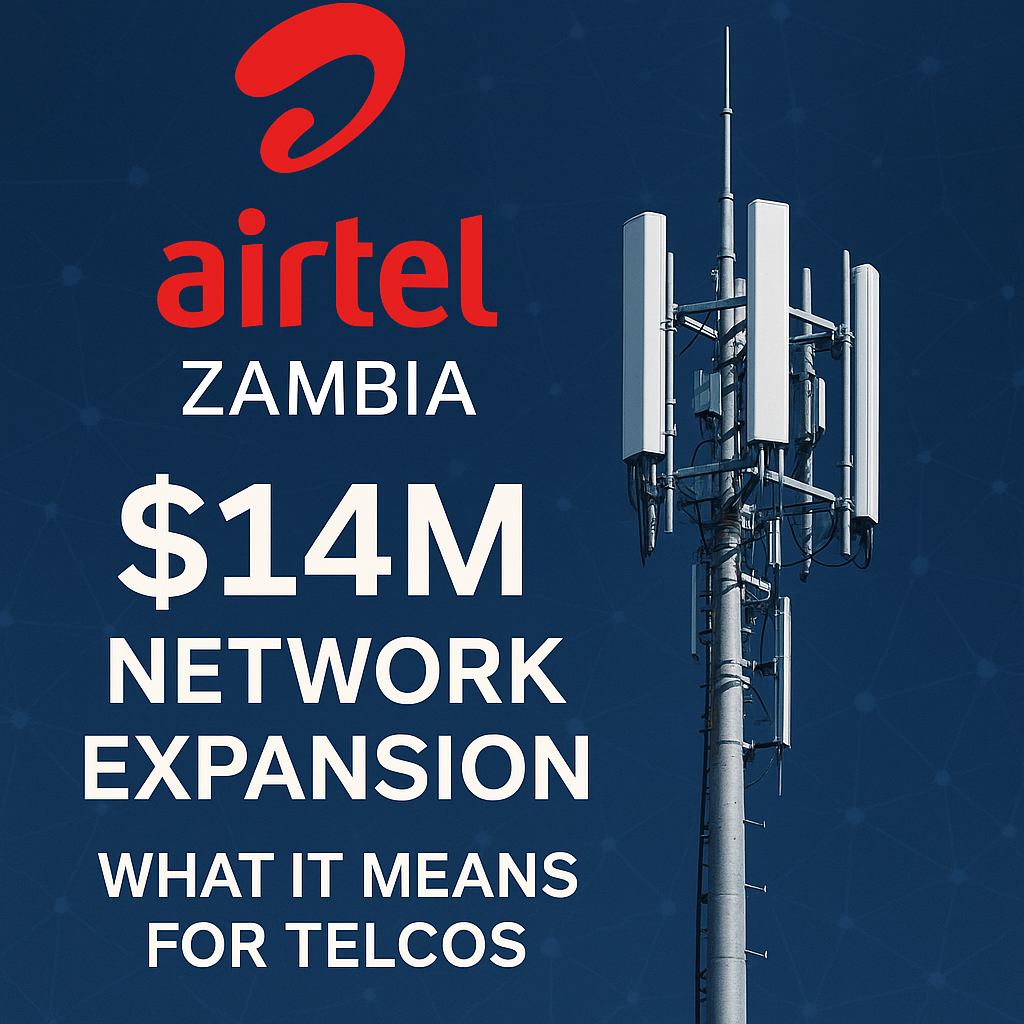Airtel Zambia’s $14 million investment into expanding its tower infrastructure is not just a local project—it’s a regional case study in how telecoms can rapidly close coverage gaps, scale digital services, and lay the foundation for long-term innovation. In partnership with IHS Towers, Airtel plans to deploy 152 new towers within six months. This initiative, which boosts coverage from 91.6% to over 93%, has deep implications for telco strategy, capex allocation, and digital inclusion.
Why This Matters for Telcos
Infrastructure is the Foundation for Digital Economies
As digital transformation spreads across Africa, coverage alone no longer suffices. Capacity, reliability, and scalability are the new imperatives. Airtel Zambia’s move shows how aggressive infrastructure deployment enables broader access to digital services, from mobile banking to remote learning.
Other African countries, such as Nigeria and Kenya, have seen similar outcomes. In Nigeria, MTN’s rural expansion program, powered by a combination of solar-powered base stations and infrastructure-sharing with IHS, significantly increased coverage in off-grid communities. In Kenya, Safaricom’s collaboration with Huawei helped deploy hundreds of 4G towers across underserved regions, enabling broader mobile money and e-learning access.
In Asia, India’s BharatNet project aimed to connect over 250,000 village councils with high-speed fiber—a government-led backbone that MNOs could use to extend last-mile services. This shows that even public-private models can be key to scale.
Global Example: Vodafone’s Rural Open RAN in the UK
Vodafone’s OpenRAN project in rural Wales and Cornwall demonstrates a similar goal: reduce network deployment costs and extend coverage to underserved regions. By using open architecture and vendor-neutral equipment, Vodafone minimized capex and increased scalability—lessons African telcos can apply with vendors like IHS.
As digital transformation spreads across Africa, coverage alone no longer suffices. Capacity, reliability, and scalability are the new imperatives. Airtel Zambia’s move shows how aggressive infrastructure deployment enables broader access to digital services, from mobile banking to remote learning.
Shared Infrastructure Accelerates Deployment
Working with IHS Towers, Airtel avoids the cost and complexity of building out sites alone. Towercos (tower companies) bring scale, operational efficiency, and the ability to deploy quickly across geographies. This partnership model is increasingly popular among MNOs (Mobile Network Operators) seeking faster time to market.
The financial implications are significant. Shared infrastructure models can reduce network rollout costs approx. by up to 30%. Additionally, telcos adopting tower sharing often report faster breakeven timelines—typically within 18 to 24 months compared to 3+ years in single ownership models.
Global Example: AT&T and Crown Castle (USA)
In the US, AT&T leases infrastructure from Crown Castle to expand rapidly and minimize asset-heavy investments. This frees up capital for service innovation while ensuring robust physical infrastructure. The leasing model allowed AT&T to prioritize 5G deployment without the burden of building every site themselves.
In India, Bharti Airtel co-founded Indus Towers to manage shared infrastructure across major telecom operators. This move not only reduced duplicative costs but also improved asset utilization rates—enhancing returns on capital employed (ROCE) across the sector.
Working with IHS Towers, Airtel avoids the cost and complexity of building out sites alone. Towercos (tower companies) bring scale, operational efficiency, and the ability to deploy quickly across geographies. This partnership model is increasingly popular among MNOs (Mobile Network Operators) seeking faster time to market.
The CapEx–OpEx Shift
By outsourcing infrastructure to towercos, telcos shift significant portions of their network spending from capital expenditure (CapEx) to operational expenditure (OpEx). This improves financial flexibility and allows for iterative investment based on market demand.
Policy Alignment and Regulatory Support
Airtel’s announcement has strong backing from Zambia’s Ministry of Technology and Science. Public-private alignment accelerates deployment, reduces red tape, and positions telcos as national development partners.
Danmari Nexus Insight:
Telcos should develop regulatory engagement playbooks that showcase how infrastructure projects align with national goals like digital inclusion, education, and SME support.
Danmari Nexus offers advisory support to telcos engaging with public-sector stakeholders.

